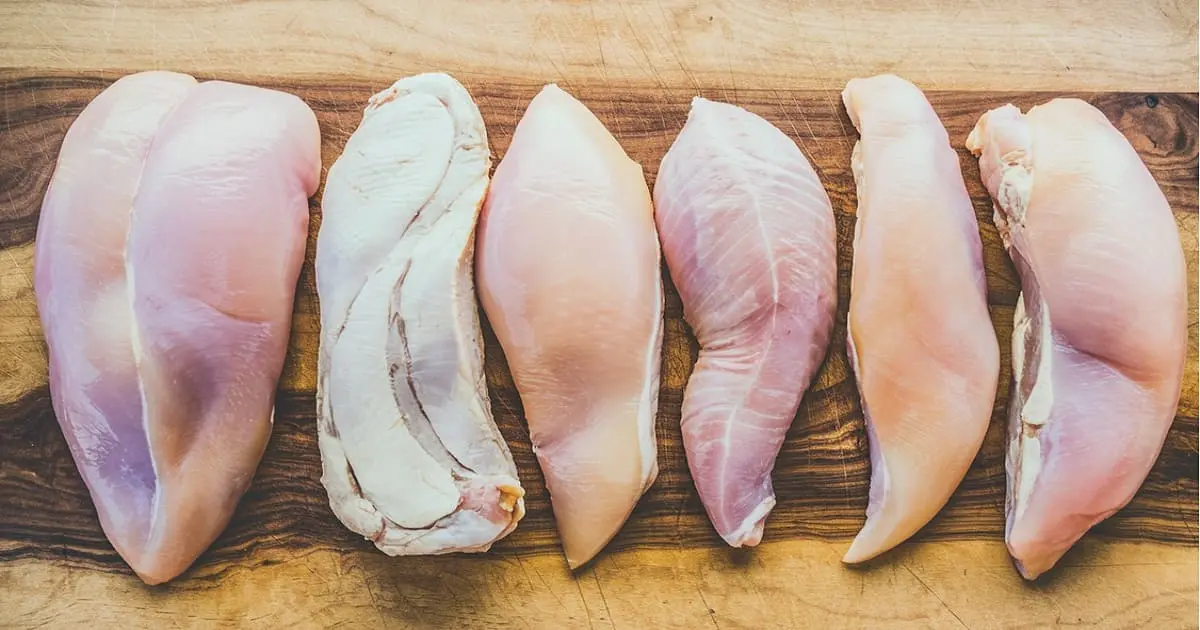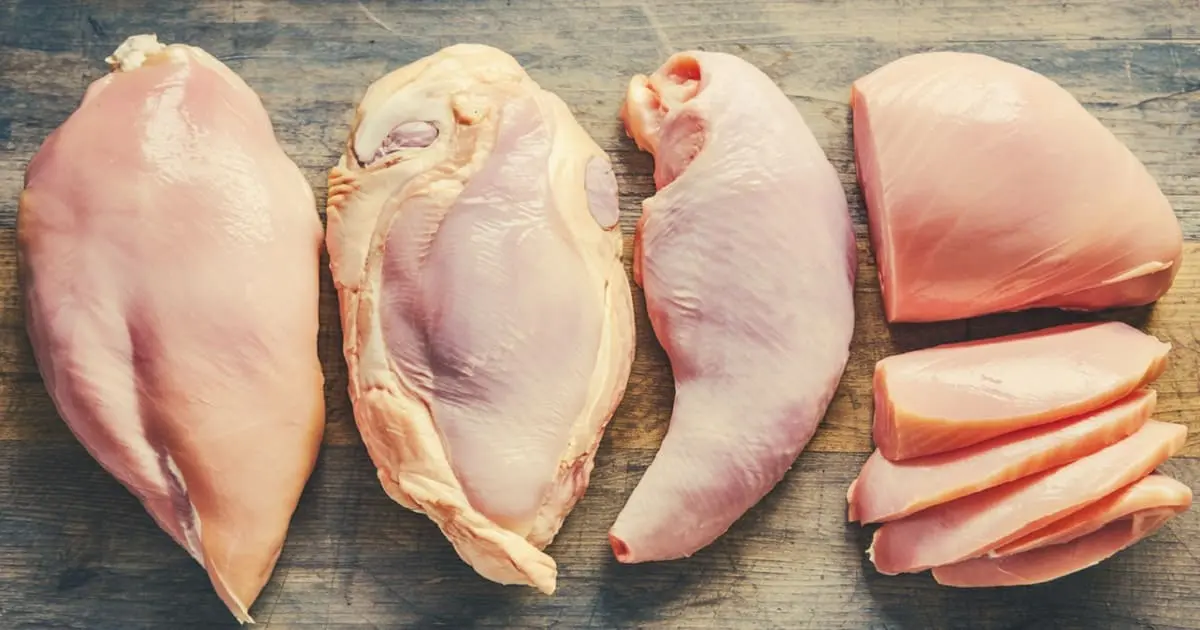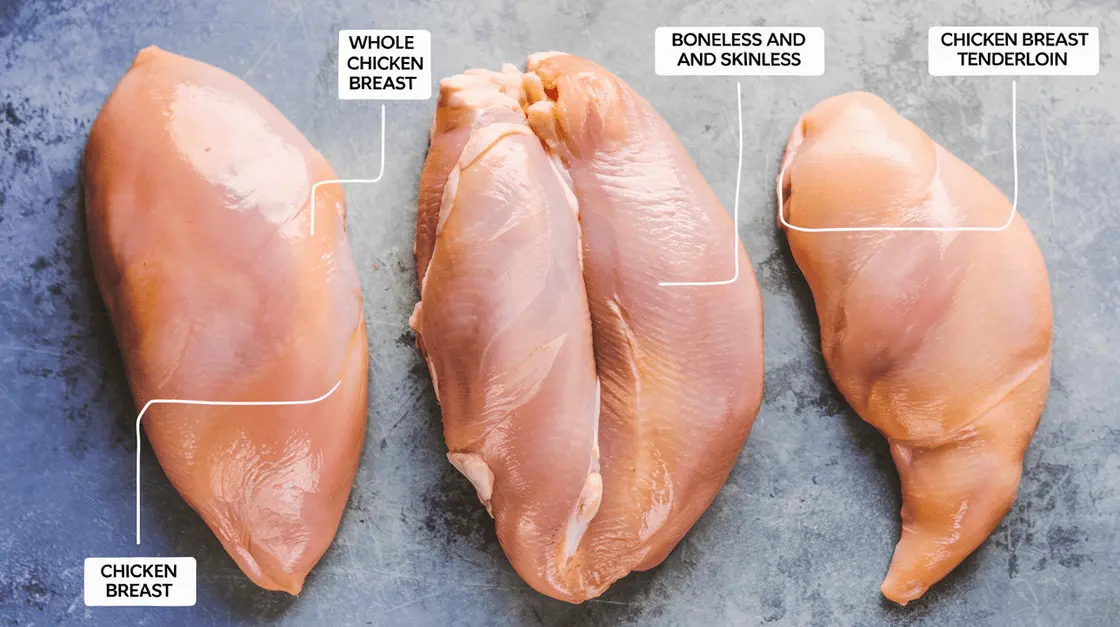IntroductionUnderstanding the different cuts of chicken breast is essential for any cook, whether you are a beginner or an experienced chef. The versatility of chicken breast makes it one of the most popular cuts of meat worldwide, and knowing how to use each specific cut can greatly enhance the flavor and texture of your dishes. This article will guide you through the various cuts of chicken breast, their characteristics, and the best ways to prepare them.
Various chicken breast cuts work well with different cooking methods. Some cuts are ideal for quick weeknight meals, while others excel in slow-cooked dishes that develop richer flavors.By understanding these differences, you can select the best cut for your needs and create dishes that are both delicious and satisfying.
To gain further insights into specific chicken breast cuts, you may find it helpful to explore guides like this one, which details the name of thinly sliced chicken breast and how to use it.
Whole Chicken Breast
The whole chicken breast is perhaps the most versatile cut available. It includes both sides of the breast along with the tenderloins, making it a substantial and filling portion. This cut is often used in recipes that require the chicken to be cooked as a single, large piece, such as roasting or grilling.
- Characteristics:
- Large, substantial cut.
- Includes both breast halves and tenderloins.
- Can be sold bone-in or boneless.
Whole chicken breasts are excellent for dishes where the chicken is the main component, such as stuffed chicken breasts or grilled chicken. The size of this cut also makes it ideal for meal prepping, as it can be easily divided into smaller portions.
Chicken Breast Halves
Chicken breast halves are simply one side of the whole breast, often sold without the tenderloin. This cut is typically boneless and skinless, making it easy to cook and portion. Chicken breast halves are popular in recipes that require the meat to cook evenly, such as baking or sautéing.
- Characteristics:
- One side of the chicken breast.
- Typically boneless and skinless.
- Easy to cook and portion.
This cut is perfect for recipes that require uniform pieces of chicken, ensuring even cooking. Popular dishes include chicken marsala and baked chicken breasts, where consistent thickness is key to avoiding dry or undercooked spots.
For more ideas on how to keep chicken breast moist during cooking, consider reading this guide.
Boneless, Skinless Chicken Breast

The boneless, skinless chicken breast is one of the most popular cuts due to its versatility and ease of preparation. This cut is lean, tender, and can be used in a wide range of dishes, from salads to stir-fries. The absence of bones and skin reduces cooking time and makes the chicken easier to handle.
- Characteristics:
- Completely boneless and skinless.
- Lean and tender.
- Extremely versatile.
This cut is ideal for quick-cooking methods such as grilling, baking, or pan-frying. Because it is lean, it is important not to overcook it to avoid dryness. Marinating the chicken beforehand can help retain moisture and enhance flavor.
For more tips on cooking boneless, skinless chicken breasts, you might find this guide helpful .
Butterflied Chicken Breast
A butterflied chicken breast is created by slicing a whole chicken breast horizontally and opening it up like a book. This cut is often used for recipes that involve stuffing or rolling the chicken, as the even thickness makes it easier to work with. Butterflying the breast also reduces cooking time because the meat is thinner.
- Characteristics:
- Sliced horizontally to create even thickness.
- Ideal for stuffing or rolling.
- Cooks quickly and evenly.
Butterflying is a great technique for dishes like chicken cordon bleu or stuffed chicken breasts. The even thickness ensures that the chicken cooks uniformly, while the increased surface area allows for more stuffing or filling.
Thin Sliced Chicken Breast
Thin sliced chicken breast is a cut that involves slicing the chicken breast into thin, even pieces. This cut is perfect for quick-cooking dishes, as the thin slices cook very quickly and evenly. It’s often used in recipes that require the chicken to be cooked over high heat for a short period, such as stir-fries or sautéed dishes.
- Characteristics:
- Thin, uniform slices.
- Cooks quickly.
- Ideal for stir-fries and sautéed dishes.
Thin sliced chicken breast is also great for marinating, as the thin slices absorb flavors more effectively. This cut is perfect for weeknight meals when time is limited but flavor is still a priority.
Chicken Cutlets
Chicken cutlets, akin to thinly sliced chicken breasts, are usually pounded to achieve an even thinner consistency. This particular cut is favored in recipes that require quick cooking of the chicken, like chicken schnitzel or chicken Milanese. Pounding the chicken also tenderizes it, making it more tender and flavorful.
- Characteristics:
- Pounded to an even thickness.
- Cooks very quickly.
- Often breaded and fried.
Chicken cutlets are perfect for dishes that require a crispy exterior, such as breaded chicken or chicken parmesan. The thin, even slices ensure that the chicken cooks quickly and evenly, while the pounding process tenderizes the meat.
For more details on chicken cutlets and other similar cuts, visit this comprehensive guide.
Chicken Tenders

Chicken tenders, also known as chicken tenderloins, are a specific muscle located under the breast. This cut is naturally tender and is often used in recipes where tenderness is key. Chicken tenders are commonly breaded and fried, making them a favorite in many households.
- Characteristics:
- Naturally tender.
- Smaller and thinner than the breast.
- Ideal for breading and frying.
Chicken tenders are perfect for making classic dishes like chicken fingers or chicken tenders. Their natural tenderness ensures that they remain juicy and flavorful, even after frying.
Chicken Medallions
Chefs often use chicken medallions, which are small, round pieces of chicken breast, in fine dining. They typically slice the breast into small, uniform pieces and cook them quickly over high heat. Cooks frequently incorporate chicken medallions into elegant dishes that require precise presentation.
- Characteristics:
- Small, round pieces.
- Often used in fine dining.
- Cooks quickly over high heat.
This cut is perfect for dishes like chicken medallions in a creamy sauce or sautéed chicken medallions. The small size and uniform shape make them ideal for dishes where presentation is key.
Cubed Chicken Breast
Cubed chicken breast is simply chicken breast that has been cut into small, bite-sized pieces. This cut is commonly used in recipes that require the chicken to be mixed with other ingredients, such as stir-fries, salads, or casseroles. Cubing the chicken ensures that it cooks evenly and quickly.
- Characteristics:
- Small, bite-sized pieces.
- Ideal for mixing with other ingredients.
- Cooks quickly and evenly.
Cubed chicken breast is perfect for quick and easy meals, such as chicken stir-fry or chicken salad. The small pieces cook quickly, making them ideal for busy weeknights.
For more recipe ideas using cubed chicken breast, consider checking out this guide for inspiration.
FAQs
What is Sliced Chicken Breast Called?
Thin, uniformly sliced chicken breast pieces are commonly known as cutlets. When the breast is horizontally sliced and spread open to resemble a book, it’s termed a butterflied chicken breast. Such cuts are ideal for recipes demanding fast cooking times and consistent thickness.
What Are the Different Types of Chicken Cuts?
There are several types of chicken cuts, including whole chicken, thighs, wings, drumsticks, and breasts. The chicken breast can be subdivided into various cuts, including the whole breast, breast halves, tenders, cutlets, and medallions. Each of these cuts possesses distinct characteristics and is appropriate for various cooking techniques.

What Cuts Can Be Made from a Breast of Chicken?
A chicken breast can be cut in various ways, such as whole breast, halved breast, tenders, thin slices, cutlets, and medallions. Each cut serves a purpose in different recipes and provides specific benefits based on the method of cooking.
What Are the 12 Cuts of Chicken?
The 12 cuts of chicken typically refer to the whole chicken divided into different parts, including the breast, thighs, drumsticks, wings, tenders, and other less common cuts like giblets. The breast may be divided into different cuts such as halves, cutlets, medallions, and tenders, each offering unique culinary possibilities.
Comparison of Chicken Breast Cuts
Comparing the different chicken breast cuts can help you decide which one to use for your next meal. Whole chicken breasts are ideal for roasting and grilling, while cutlets and thin slices are perfect for quick-cooking dishes. Tenders and medallions are best for elegant, tender dishes.
- Whole Breast: Best for roasting or grilling.
- Halves: Perfect for baking or sautéing.
- Cutlets: Ideal for breading and frying.
- Thin Slices: Great for stir-fries and quick sautés.
- Tenders: Excellent for breaded dishes.
- Medallions: Best for fine dining and presentation.
Understanding the differences between these cuts can help you choose the right one for your recipe, ensuring the best flavor and texture.
Cooking Tips for Various Cuts
Different chicken breast cuts require different cooking methods to bring out their best flavors. Here are some tips for cooking the various cuts:
- Whole Breast: Roast or grill with the skin on to retain moisture.
- Halves: Bake or sauté with seasoning for even cooking.
- Cutlets: Pound thin for quick frying or sautéing.
- Thin Slices: Cook over high heat for a short time to prevent drying out.
- Tenders: Bread and fry or bake for a crispy exterior and juicy interior.
- Medallions: Sear quickly in a hot pan for an elegant presentation.
Following these tips will maximize the flavor and satisfaction of your chicken dishes with every cut.
Recipes for Each Cut
To maximize the potential of these cuts, consider the following recipe ideas for each type of chicken breast cut:
- Whole Breast: Try stuffed chicken breast with spinach and cheese.
- Halves: Make baked chicken breasts with a lemon herb marinade.
- Cutlets: Prepare chicken parmesan with breaded cutlets.
- Thin Slices: Cook a quick stir-fry with thinly sliced chicken and vegetables.
- Tenders: Make crispy chicken tenders with a honey mustard dipping sauce.
- Medallions: Sear chicken medallions and serve with a creamy mushroom sauce.
These recipes will help you explore the versatility of chicken breast, allowing you to create a wide range of dishes that cater to different tastes and occasions.
For more inspiration, you might also explore this ultimate guide on thin chicken breast recipes.
Conclusion
Understanding the different cuts of chicken breast is essential for any home cook or chef. Each cut offers unique advantages, from the tender and flavorful tenders to the quick-cooking cutlets. By knowing how to choose and prepare these cuts, you can elevate your cooking and create delicious, satisfying meals.
Whether you’re preparing a simple weeknight dinner or a special occasion meal, the right chicken breast cut can make all the difference. Use this guide to explore the possibilities and discover new ways to enjoy chicken breast in your cooking.
For further exploration of chicken breast cuts and their uses, check out this in-depth comparison between thin sliced chicken breasts vs chicken cutlets.

